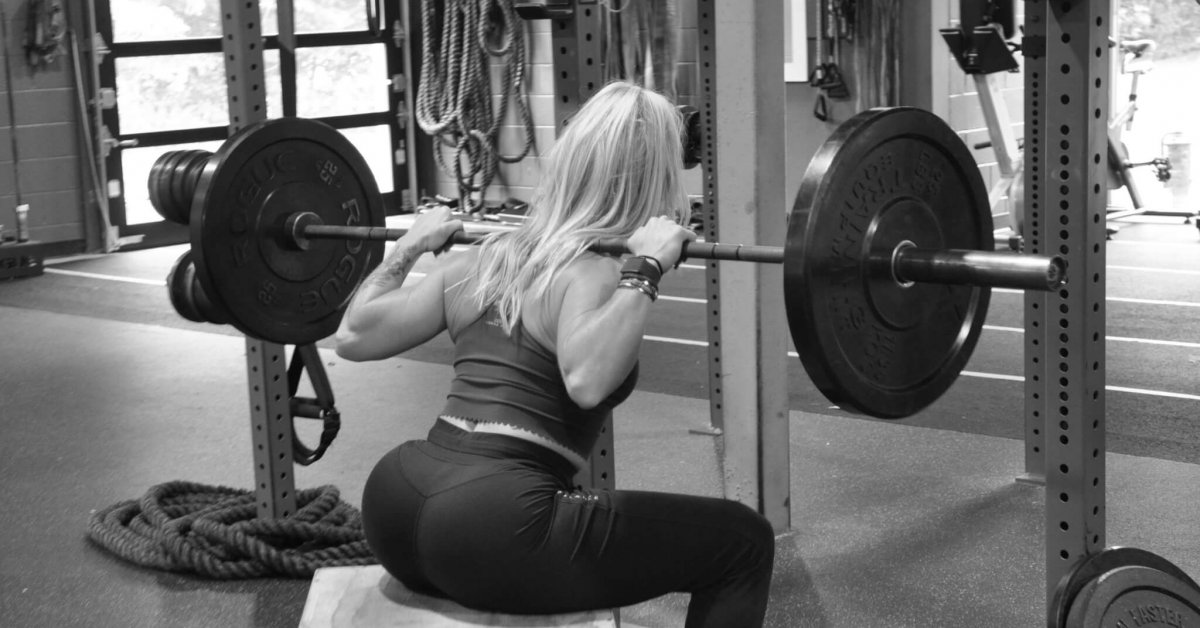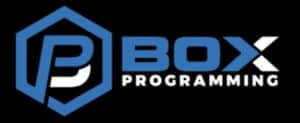CrossFit is evolving – are you evolving with it?
Since entering the mainstream fitness space in the early 2000s and hitting peak participation globally nearly 10 years later, CF has earned a reputation as the kings of functional fitness worldwide. The numbers are as staggering as the training style was polarizing. CF quickly provided the biggest disruption in fitness industry history.
In the process, CrossFit popularized many interesting concepts in both training culture and programming methodology and modalities. But in a way, the traditionalist CrossFit style of training ended up veering too far to the left of the foundational principles of effective strength and conditioning program design that have held true for nearly a century at this point through both research and real-world results.
Standard fundamental best practices protocols such as implementing pre-training warm-ups, to mitigating the risk of potential training injuries through base movement screening and baseline beginners coaching have all but been forgotten in today’s traditional CrossFit model.
And things like programming recovery methods into training via cooldowns and low-intensity regenerative work such as soft tissue work, corrective exercises and single-joint exercises for hypertrophy? This has been a big no-no in traditional CrossFit.
The Strength Synergy – A Smart Approach To CF
Times are changing. And with it, traditional CrossFit has been forced to evolve out of sheer necessity to stay relevant in an ever more growing and competitive fitness industry landscape.
Today we are starting to see a synergy in CrossFit group fitness classes that now utilize things that just about any strength and conditioning facility would take for granted. As we say, CrossFit is becoming more centric, moving closer towards long-standing established principles of strength and conditioning.
Synergizing strength and conditioning with the best elements of CrossFit is a very dynamic proposition not only for our clients’ results but also for weathering the financial shit storm that has begun engulfing many CrossFit facilities across the world who are struggling to continue to keep their doors open and businesses running without monthly losses on the report sheet.
Across the board, we can do better. Knowing what we know about the human body and how it responds to stress – both inside the gym and out, it has been my single-minded mission to take everything that we know and love from the feel of traditional CrossFit, but improve many elements to continue to ensure the very best for our clients results, resiliency and experience that the industry has to offer today.
The outcome? functional fitness, but smarter.
5 Key Principles of Our Group Programming
Some will say what we do is no longer CrossFit, which is perfectly fine. No matter what you call it, the goal will continue to always be the same, to best serve our clients’ clients, keep them healthy, progressing and thriving for life.
And simply put, force-feeding “traditional” CrossFit exercises like snatches and kipping pull-ups and blindly following archaic and dogmatic approaches to what you may think CrossFit does not serve a vast majority of our client’s. It hinders them.
CrossFit is evolving, and the question remains, are you evolving with it, providing the best for you and your client’s training?
At the end of the day, you must be brutally honest with yourself and answer this question, if you subscribe to the mindset of kicking the shit out of your clients daily while injury rates are sky high and bank accounts are at all-time lows, isn’t it time to reevaluate why you got involved with the fitness industry in the first place?
It’s time to evolve. Here are 5 ways to instantly upgrade your traditional CrossFit training.
#5 We Improve New Client Retention
TIP: Stop throwing people into snatches and chest-to-bar pull-ups on day 1
I’m always shocked when I drop in at the local CrossFit box and see soccer moms doing full snatches in a fatigued setting, and usually coupled 2-3 other movements. What’s more disturbing is that MOST of the folks performing full snatches when I’ve dropped in at other boxes have zero business doing a full snatch from a mobility, stability or skill requisite standpoint.
And I don’t mention this to put these clients or coaches down or to come off negatively in any way. So keeping that in mind, let’s think about this logically…
If someone cannot perform an unweighted overhead squat (arms overhead in the Y position) without going into lumbar flexion, wouldn’t it make more sense to simply start with an easier variation that aligns with this person’s ability like a goblet squat?
If you answer “no” to this then please stop reading right now – you’ll hate the rest of this article.
Instead, we opt for more user-friendly variations and when we do program higher-skill variations like the full snatch under fatigue there are still options available that will align with people that simply are not capable of performing a snatch. Remember, no one exercise is mandatory to achieve results.
And that’s exactly why I covered this topic, “20 Smarter CrossFit Exercises” earlier this year.
When you’re able to follow a more logical approach in terms of progression, more of your clients will improve their metrics not to mention look and feel a whole lot better.
Earn the right to progress, and respect movement variations and patterns that may seem “simpler” just as much as the peak challenge. Because in reality, your clients don’t know that a landmine press is any less challenging than a handstand push up if they are going hard, heavy and achieving a training effect.
Each foundational movement pattern and classification should be scalable to your clients in a customized and individualized way. This includes patterns like squatting, hip hinging, and upper body push and pulling.
This key progression construct is what’s kept our clients healthy and successful over the last decade. Have a plan, and know-how to progress and regress patterns to avoid becoming a “one size fits all” coach. Because the reality is, one size fits on one.
#4 We Systemize Our Warm-Ups To Improve Training Preparedness
TIP: Utilize the 6-Phase Dynamic Warm Up Sequence
I’ll be honest – I’m incredibly open-minded when it comes to training methods. And I certainly do not think for one second that I have all the answers or that my way is the only way. But what I do know is that it makes no sense reinventing the wheel.
For a while, I thought we could reinvent the group fitness wheel, then it occurred to me: why can’t we simply have a “Bruce Lee like approach” to CrossFit – accept what’s useful and reject what is useless? Since then that’s the stance we’ve adhered to and have had plenty of people not jive with this message which is to be expected to see that CrossFit started out with the bravado of “your workout is our warm-up.”
So the question became, how can we still utilize classic CrossFit while still setting up their clients for long term success? Put simply, we have opportunities with our clients that are often overlooked such as during our warm-up.
I’m quite certain the many coaches aren’t thinking about actually screening their clients in the warm-up as I know this wasn’t always on my radar when I owned my CrossFit gym.
But with the 6-Phase Dynamic Warm-Up Sequence made popular by Dr. John Rusin, our lens has changed – another cog in the wheel of a constantly evolving system. We are now capable of not only providing a quick judgment of “yes” or “no” for each of the clients for utilizing the training modalities of the day – this is huge and is the difference between having a client for a year or a lifetime.
Some of the key tenets of the 6-phase Dynamic Warm-Up consist of:
- Phase 1 – Self-myofascial release techniques to decrease muscular tonicity
- Phase 2 – Bi-phasic stretching to open up authentic range of motion
- Phase 3 – Corrective exercise mobilize and improve the skill of movement
- Phase 4 – Activation to stabilize new found ranges of motion
- Phase 5 – Foundational movement pattern development (if we are squatting we’d squat)
- Phase 6 – CNS preparation to heighten the state of the sympathetic nervous system
Sounds like a lot for a warm-up? All of this can be accomplished in as little as 10-12 minutes in a group training session (7-9 minutes for an individual). The key is efficiency programming with a minimum effective dose strategy.
Remember, the goal of a dynamic warm-up is NOT only performance-based. An effective warm-up strategy also keeps your clients healthier by strengthening functional weak links and allowing daily maintenance of tissues, movement patterns and motor skill sets.
It’s the best-kept secret for keeping your clients more resilient against pain and injuries, and why it’s a pivotal part of the smarter approach to traditional CrossFit.
#3 We Prioritize Strength Training: The #1 Physical Capacity
TIP: The stronger the person, the better their results across the board
Look I’ve heard the “conditioning is the most important” debate too many times, but this debate is for people that have no knowledge of basic physiology.
And yes, I’ve even published one of my all-time favorite articles right here on DrJohnRusin.com, “Training To Get Strong Isn’t Dangerous, Being WEAK Is Dangerous”. And yes, that title pretty much says it all.
I cannot stress enough how important strength training is for EVERYONE and if you want to be able to perform and push the boundaries safely for a lifetime and not exacerbate muscular asymmetries then you better devote some time to getting swole.
But what is strength training? There is much confusion about what strength training is and of course, not all forms of strength are created or developed the same way.
Although by definition strength is “the ability to exert maximal force” we are going to look at strength from more of a holistic approach encompassing all tools that improve it, directly and indirectly.
With that said, in our model of “strength training” allows us to accomplish:
- Improve body composition
- Improve muscular imbalance and posture
- Improve the strength of smaller muscle groups that assist in complex movements which then allows our athletes to perform complex movements with less risk of injury
- Improve neuromuscular efficiency allowing your athletes to actually use more muscle fibers to generate more force
Again, strength = resiliency not to mention EVERYTHING else is easier from lifting a heavy load to running a 5k.
With that said, strength work is done REGULARLY and to give you a bit more detail we have some strength component in our Affiliate Program Design almost daily.
Now that doesn’t mean we are squatting or pressing daily, but there is a long list of variations to choose from – the bulk of our work is centered around the posterior chain as this is where EVERYONE is chronically weak.
Considering the posture of most of our clients puts them into flexion based moments (sitting at a desk or on your iPhone) it makes sense that the backside needs work.
Additionally, our strength work is centered around 6 foundational movement patterns of squat, hinge, lunge, push, pull, carry. Here’s my go-to list of non-traditional CrossFit strength exercises, all linked individually so you can see these movements in action:
- Split Squat
- 1-Arm Row – symmetrical stance
- Glute Hip Thrust or Glute Bridge
- Banded Shoulder Triset
- DB Floor Press
- Inverted Rows
- Banded Pull-Through
- Box Squat
- Sumo Deadlift
- Tempo Goblet Squat
While this is not meant to be an exhaustive list, it showcases some staple exercises that will transform your client’s physiques while bolstering strength capacity. We don’t just use novelty and variations in our programming aimlessly, we work to program them all more intelligently.
And that’s a big part of what makes our programming smarter, more sustainable and a better representation of an evolved CrossFit model, simple strength basics executed extremely well.
#2 We Prioritize Recovery with Cool Downs For More Rapid Results
TIP: Start the recovery process before your clients leave the building
What’s in a cool down? A lot! In fact, this is one of the bigger changes we’ve made to our programming – including measures that ANYONE can do after class to drive recovery via the parasympathetic nervous system.
Often times clients “want more” after class, but really they’d be better served to focus on improving their recovery not to mention their sleep patterns, but we can certainly control the implementation of easy recovery measures.
For example, now that we’ve concluded our training session it’s the perfect time to use foam rolling to enhance lymphatic drainage. This foam rolling is done globally on large/dense musculature with 6-12 inches of relative motion, different than our oscillatory foam rolling in our 6-phase dynamic warm-up.
Next, using our biphasic stretching in the same manner we did in our warm-up.
Finally, positional parasympathetic breathing drills done for 3-5:00 adds the cherry on sundae and drives the parasympathetic nervous system. Here are some examples of cool down work based off the above 6-phase warm Ups:
Here’s your cooldown protocol:
- Global Foam Rolling: 6-12 inches of relative motion rolling proximal to distal. This is done on the same musculature you foam rolled in your warm-up but now the execution is different to expedite recovery.
- Biphasic Stretching: Same as done in your warm-up.
- Parasympathetic Breathing Drills: 15-20 Breaths with a 3 second inhale + 1-second hold + 3 seconds exhale +1 second hold at the bottom
The cooldown allows us to build our clients’ recovery up as much as our training is strategically breaking them down. And a more recovered client means a healthier client in both the short term and long term in a day and age where chronic burn outs and injuries have become the norm.
#1 Conditioning: More Is Not Better, BETTER is Better
TIP: Reframe your mindset on programming soul-crushing metcons
“Go so hard” is a one-way ticket to overtraining and the methodology that too many subscribe to. Don’t be fooled by social media there is a point of diminishing returns; it’s likely if you’ve been around the block a few times you’ve experienced this.
What is a better approach is actually knowing the difference between the aerobic and anaerobic systems, how the two overlap and in just about every single CrossFit metcon, and how we can improve the two most effectively.
The funny part is that CrossFit is far more aerobic than it is anaerobic yet the premise of the system is based on “high-intensity.” And we’ve all heard “intensity is relative.” That can be said about just about anything, but what’s better is actually knowing what the desired outcome and “why” is of every single metcon you put into your plan.
The best possible option is to focus on building the base of fitness which is the aerobic system. The aerobic system affords us the ability to recover better and LIVE LONGER – it’s pretty well established via multiple studies the connections between endurance and lifespan. Without an efficient aerobic system, your clients will never be that great at CrossFit either.
I will say from personal experience that this was the biggest game-changer in my own training. I went from training 10x a week with my heart-rate near redline in every single workout to doing more enjoyable easy conditioning pieces.
How do I know this worked? My resting heart rate dropped from 66 to 54, my heart rate variability scores are 20 points higher than they were 2.5 years ago AND my performance has improved 10-fold.
My last open performance was drastically better than it was all of the years I was training less optimally. In fact, I went from being in the 300s in my region to the 60s without doing ANY BRUTAL METCONS.
My best advice to you would be to:
- Include Cardiac Output Method AT LEAST once a week in your plan. This is cyclical style work i.e. light row, jog, run, light sledpull for 30+ minutes with a heart-rate of 130-150BPM – conversational. This will carry over like you wouldn’t believe to other modalities.
- Include more work to rest conditioning pieces. If you’re not programming planned rest in at least 1-2 workouts a week then you’re setting people up to never improve their work-output.
- Understand the connection between the amount of muscle worked with a given movement and how that relates to spiking the heart-rate. Globally demanding movements like snatches, burpees, and thrusters should be used strategically and not randomly.
List of benefits of improving the Aerobic System:
- Improved Recovery
- Improved Sleep
- Improved ability to pump blood to the extremities
- Improved ability to replenish ATP for explosive movements
- Decreased resting heart-rate
- Longer lifespan!
Constantly Varied Does Not Equate To Results
CrossFit varies EVERYTHING and while you may think this is an advantage we see it differently. In fact, conditioning does NOT need to be ‘Constantly Varied!’
CrossFit coaches vary everything far too much – conditioning is one of those things that gets changed daily like underwear. Things like intensity, movement, methods, (some variables that coaches may not even fully understand.) We take a different approach and vary conditioning pieces LESS. This has a number of benefits such as:
- Improving pacing
- Improving energy control
- Improving movement efficiency
- Improving work capacity
Almost everyone gets MORE from the conditioning the piece the SECOND time around. And the same goes for strength work – too variance will NOT allow your clients to learn to move better as well as determine what exercise variations resonate with their unique needs.
It’s Still CrossFit, but Trained Smarter & More Sustainably
If you take one thing from this article it’s the being open-minded affords you the best gains in knowledge as a coach. It also allows you to better train your clients – now that’s a win-win. I truly believe the best coach you are the more you will get paid – plain and simple.
These are the easiest five things that can literally revolutionize group fitness and make CrossFit smarter, and better across the board, challenging the status quo of an outdated system and improving it intelligently.
And remember, your clients are NOT running the programming, you are! Letting your clients decide on programming is the equivalent of letting the prisoners run the prison – don’t go down that path!
The biggest challenge with this approach? It takes a coach that is confident in his or her ability to articulate the “why” behind these principles – coaches need to be dedicated to their education otherwise they’ll likely be a push-over for members.



